An open rectangular tank of dimension containing water upto a height of is accelerated horizontally along the longer side.
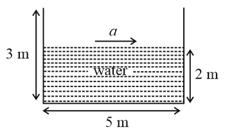
(i) Determine the maximum acceleration that can be given without spilling the water.
(ii) Calculate the percentage of water split over, if this acceleration is increased by
(iii) If initially, the tank is closed at the top and is accelerated horizontally by find the gauge pressure at the bottom of the front and rear walls of the tank.


Important Questions on Fluid Mechanics
A conical vessel without a bottom stands on a table. A liquid is poured with the vessel & as the level reaches , the pressure of the liquid raises the vessel. The radius of the base of the vessel is and half angle of the cone is and the weight of the vessel is What is the density of the liquid?
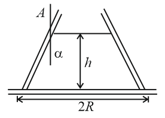
A cylindrical tank having cross-sectional area is filled with two liquids of densities and to a height as shown in the figure. A small hole having area is made in right vertical wall at a height from the bottom. Calculate
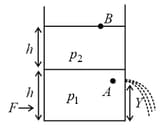
(i) velocity of efflux.
(ii) horizontal force to keep the cylinder in static equilibrium, if it is placed on a smooth horizontal plane
(iii) Minimum and maximum value of to keep the cylinder at rest. The coefficient of friction between cylinder and the plane is
(iv) velocity of the top most layer of the liquid column and also the velocity of the boundary separating the two liquids.
A cylindrical wooden float whose base area and the altitude drifts on the water surface. Specific weight of wood
What work must be performed to take the float out of the water?
Compute the work to be performed to submerged completely the float into the water.
A cylindrical rod of length and density floats vertically in a liquid of density as shown in figure.
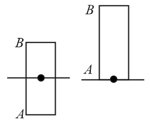
(i) Show that it performs SHM when pulled slightly up and released and find its time period. Neglect change in liquid level.
(ii) Find the time taken by the rod to completely immerse when released from position shown in second figure. Assume that it remains vertical throughout its motion. (take )
A thin horizontal disc of radius is located with in a cylindrical cavity filled with oil whose viscosity (figure). The distance between the disc and the horizontal planes of the cavity is equal to Find the power developed by the viscous forces acting on the disc when it rotates with the angular velocity The end effects are to be neglected.
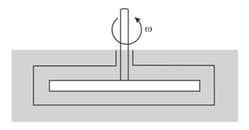
9A cube with a mass completely wettable by water floats on the surface of water. Each side of the cube is What is the distance h between the lower face of cube and the surface of the water if surface tension is Take density of water as Take angle of contact is zero.

